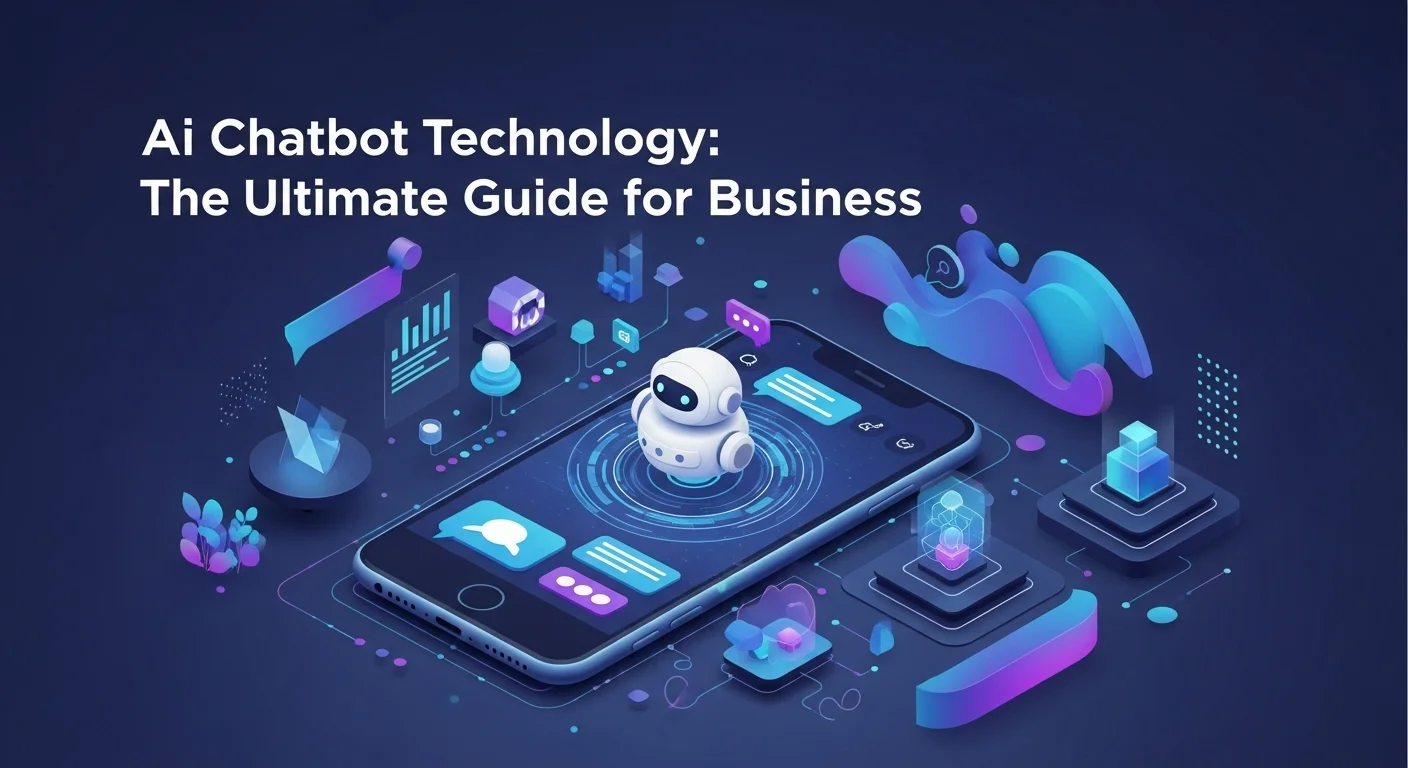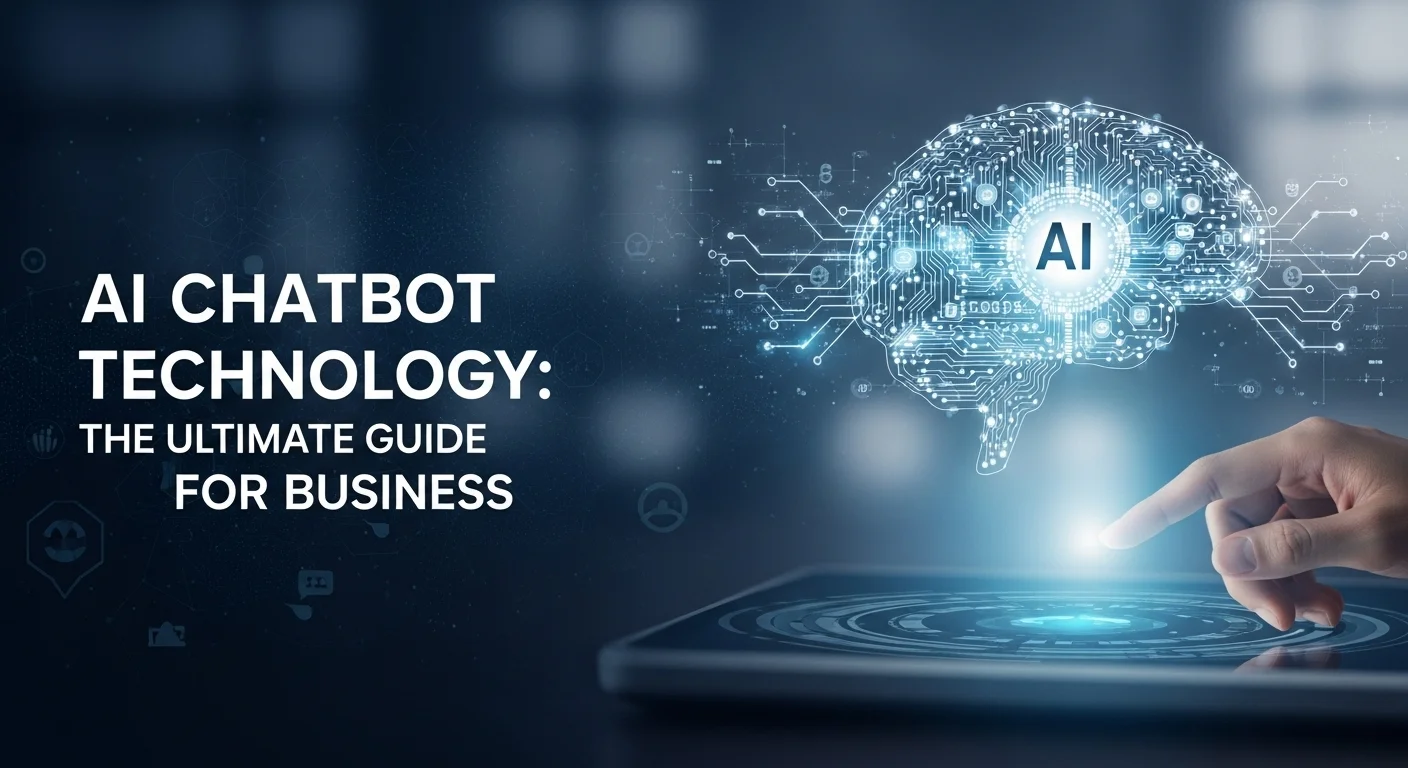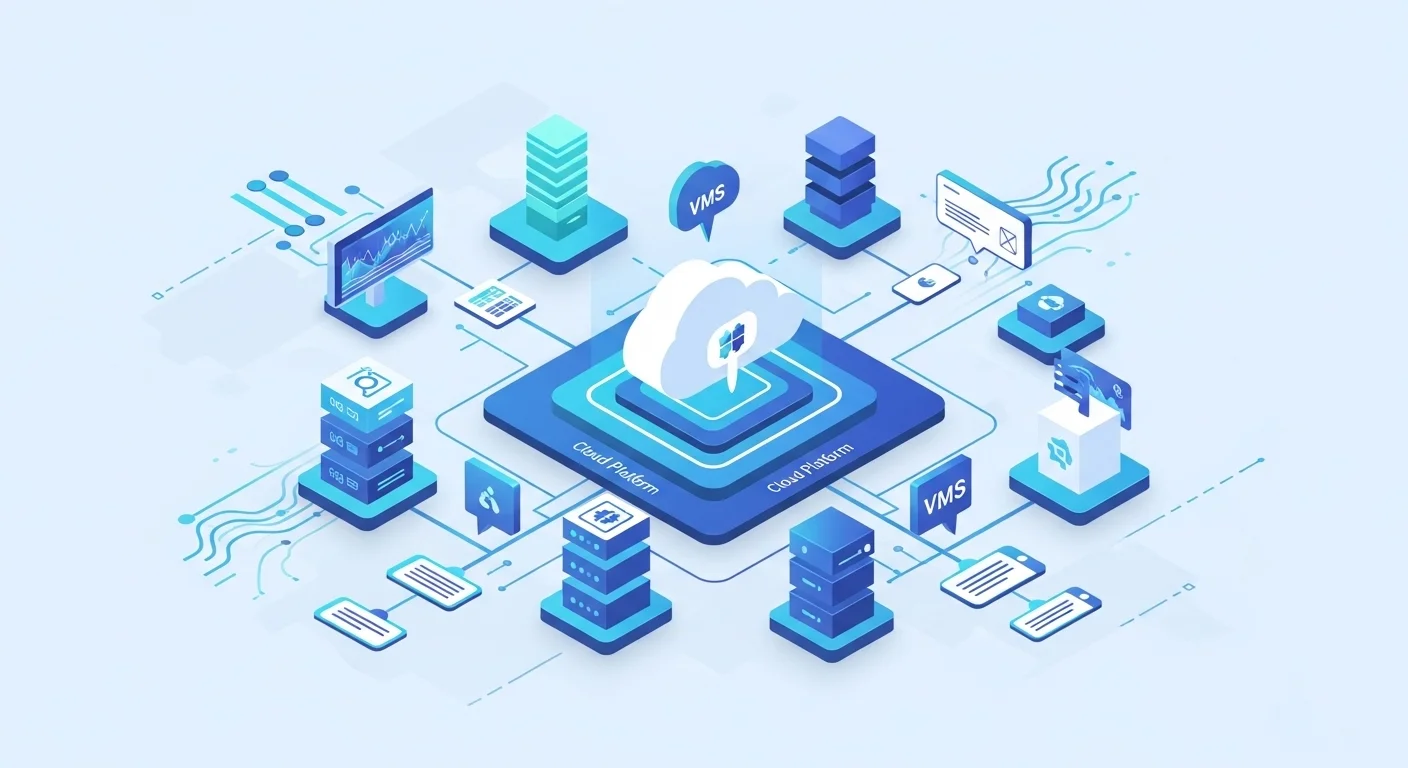AI Chatbots Explained: A Practical Guide for Your Business

Executive Summary
In my years of helping companies navigate the digital world, I've seen countless technologies promise to be the next big thing. But AI chatbots are one of the few that have truly delivered. They've evolved from simple, clunky bots into sophisticated conversational partners that are reshaping how we do business. This guide is my attempt to cut through the noise and give you a real-world look at AI chatbot technology. We'll explore what they are, how the magic behind them works (think Natural Language Processing and Machine Learning), and why they've become so vital. I'll share insights on how you can use them to not just answer questions, but to create amazing customer experiences, streamline your operations, and gain a serious edge over the competition. We'll touch on powerful platforms like Google's AI and the GPT models everyone is talking about. Whether you're running a business, working in marketing, or are just fascinated by tech, this article will give you the practical knowledge you need to harness the power of AI chatbots.
Table of Contents
What Exactly is an AI Chatbot, and Why Should You Care?
- What is an AI Chatbot?
- The Technology Behind the Magic: How Chatbots Work
- Real-World Business Benefits You Can't Ignore
- Your Step-by-Step Guide to Implementing an AI Chatbot
- The Nuts and Bolts: A Chatbot's Technical Architecture
- Proven Strategies for a Successful Launch
- Platform Showdown: Google's AI vs. OpenAI's GPT
- Expert Tips to Create a Chatbot People Actually Want to Use
- Designing Conversations That Don't Feel Robotic
- Unlocking True Power: Integrating Your Business Tools
- How to Build a Future-Proof Chatbot Strategy
You hear the term 'AI Chatbot' everywhere these days, from tech news to business strategy meetings. But what is it, really? At its heart, an Artificial Intelligence Chatbot is a software program built to have a conversation with you, just like a person would, through text or voice. I remember the early days of chatbots; they were rule-based and could only follow a strict script. They were frustrating. Today’s AI chatbots are a world apart. They use incredible technologies like Natural Language Processing (NLP) and Machine Learning (ML) to actually understand what you mean, handle tricky questions, and give smart, relevant answers instantly. The amazing part is that they learn from every conversation, constantly getting better at what they do. This leap from clunky scripts to intelligent conversation is what makes them so revolutionary.
So why is this so important for a business? Think about it. We live in a world where customers expect answers *now*, not tomorrow. An AI chatbot offers a brilliant way to meet that demand, 24/7. I've seen companies completely transform their support operations by letting chatbots handle the bulk of common questions. This frees up their human team to focus on the complex issues where they're needed most. This isn't just about saving money or time; it's about making customers happier with instant support. But it goes deeper. A great chatbot creates a personal experience. By looking at user data, it can offer smart recommendations, walk a customer through a complicated process, or even guess what they'll need next. That's how you build real loyalty. Plus, every single chat is a goldmine of data, giving you direct insight into what your customers want and where their pain points are. In today's market, having a smart AI chatbot isn't a futuristic luxury—it's a fundamental part of staying competitive.
The Technology Behind the Magic: How Chatbots Work
To really get why AI chatbots are so powerful, it helps to peek under the hood. The core of a chatbot's intelligence comes from a field called Natural Language Processing (NLP), which is all about teaching computers to understand and speak our human language. When you send a message, NLP gets to work, figuring out your intent—what you're trying to do—and pulling out key bits of information, or entities, like dates, names, or locations. Once it understands the request, it uses another process, Natural Language Generation (NLG), to put together a response that sounds natural and human. This all happens in the blink of an eye, creating a smooth, conversational feel.
The other secret ingredient is Machine Learning (ML). While NLP gives the chatbot its language skills, ML gives it the ability to learn and improve. Instead of programming a bot for every single question someone might ask (which is impossible), you train it on huge amounts of real conversation data. Through this training, the bot learns to spot patterns, understand context, and figure out the best response, even to questions it's never seen before. Think of it like this: every chat is a mini-lesson that makes the chatbot a little bit smarter. This is the key difference between a modern AI bot and an old-school, rule-based one. The AI bot is alive, always learning and adapting to serve your customers better.
Real-World Business Benefits You Can't Ignore
The ways AI chatbots can be used in a business are practically endless. The most obvious, and often most impactful, is in customer service. A chatbot can be your front line, instantly answering frequently asked questions and solving common problems around the clock. My clients consistently report a huge drop in customer wait times and a big jump in satisfaction after implementing a bot. More importantly, it lets their support agents focus on the tricky, high-value problems that require a human touch. In sales and marketing, I've seen chatbots work wonders for generating leads. A bot on your website can greet visitors, ask a few qualifying questions, book a demo, and guide them through the sales process in a friendly, conversational way that feels much more engaging than a static form.
But the benefits don't stop with customers. Chatbots are fantastic for streamlining internal work, too. Imagine an HR bot that can instantly answer employee questions about benefits or company policy, or an IT helpdesk bot that can reset passwords automatically. These tools give employees back valuable time and reduce internal friction. The bottom line is compelling: you save money through automation, you operate more efficiently, and you can scale your business without your support costs spiraling. The data collected is just the cherry on top, giving you incredible business intelligence to make smarter decisions. With platforms like Google's AI and models like GPT making this technology easier to access, businesses of any size can now get in on the action and see a real return on their investment.

Your Step-by-Step Guide to Implementing an AI Chatbot
Putting an AI chatbot into your business isn't something you do on a whim; it's a strategic move that needs a bit of planning. This guide is designed to walk you through that process, from figuring out the tech to choosing the right platform for your goals. The first big decision you'll face is whether to build a custom chatbot from scratch or use one of the many platforms available online. Building your own gives you total control, but it's a major undertaking that requires a skilled technical team and a significant budget. For most businesses I work with, using an established chatbot platform is the way to go. These platforms provide user-friendly tools that let you create and launch a powerful bot with little to no coding, often including helpful templates, analytics, and easy integrations.
The right platform for you will depend entirely on what you need the chatbot to do. If you just want to automate answers to common questions, a simpler platform will work fine. But for more complex tasks like processing payments or creating deeply personalized user journeys, you'll need something more advanced. This is where it's helpful to understand the different bot types. The older, rule-based chatbots are like interactive FAQs; they're easy to build but very rigid. An AI-powered chatbot, on the other hand, understands natural language, learns from conversations, and can handle a much wider range of queries. Many of the best modern platforms offer a hybrid approach, mixing the predictability of rules with the intelligence of AI. This guide will help you navigate these choices, compare top contenders like Google's AI and OpenAI's GPT models, and give you a clear plan for getting the right chatbot up and running.
The Nuts and Bolts: A Chatbot's Technical Architecture
To truly get a feel for what your chatbot can do, it helps to understand its moving parts. It’s not just one program, but a system of components working together. It all starts on the **Channel**, which is wherever the user is—your website, a mobile app, or a messaging platform like Facebook Messenger. When a user sends a message, it zips over to the chatbot's core, the Natural Language Processing (NLP) Engine. This is where the bot first tries to understand the user by figuring out their **Intent**. The intent is simply what the user wants to accomplish, like 'check order status' or 'book an appointment'.
At the same time, the engine performs **Entity Extraction**, which means it pulls out the key details needed to fulfill the intent, like an order number or a specific date. Once the intent and entities are clear, the **Dialogue Manager**—the chatbot's brain—takes over. It manages the conversation's flow, remembers what's been said, and decides the next step. It might ask a follow-up question to get more info, or it might be ready to act. To do this, it often needs to talk to your other business systems, like your customer database (CRM) or inventory system. Finally, the **Response Generation** component crafts a natural-sounding reply and sends it back to the user on the channel. This entire loop, from you typing 'hello' to the bot's reply, is the fundamental process that makes a chatbot work.
Proven Strategies for a Successful Launch
From my experience, a successful chatbot project is about 20% technology and 80% strategy. The tech is important, but how you implement it is what makes or breaks it. The absolute first step is to **Define Clear Goals**. What, exactly, do you want this bot to achieve? Are you trying to cut down on support tickets, capture more leads, or just make your website more engaging? You can't measure success if you haven't defined it. Set clear Key Performance Indicators (KPIs) from day one, like the percentage of chats resolved without a human, customer satisfaction scores, or conversion rates. The second step is to **Know Your Audience and Use Cases**. Who are you building this for, and what problems will it solve for them? Start small. I always advise clients to pick a few high-impact tasks for the bot to handle perfectly, rather than trying to build a bot that does everything poorly. You can always add more capabilities later.
With your goals set, it's time to **Design the Conversation**. This means mapping out how a typical chat should go. Even the smartest AI needs a well-designed structure to guide users to a successful outcome. Plan for everything: a friendly welcome, how to handle misunderstandings, and, crucially, a smooth way to hand off the conversation to a human when the bot gets stuck. A huge part of this is giving your chatbot a **Personality**. Its tone should match your brand. Is your brand professional and serious, or friendly and fun? Let the bot reflect that. Finally, remember that a chatbot is never 'done'. The most important technique is to **Train, Test, and Iterate**. Launching the bot is just the beginning. You need to constantly check the conversation logs, see where people are getting stuck, and use that data to make the bot smarter and more helpful over time. This continuous improvement cycle is the secret to long-term success.
Platform Showdown: Google's AI vs. OpenAI's GPT
In the world of AI chatbots, two giants stand out: Google, with its powerful AI models like Gemini, and OpenAI, with its game-changing GPT models that power ChatGPT. When I'm advising clients, the choice between them often comes down to their specific needs. **Google's AI (Gemini)** has a massive advantage with its seamless connection to the entire Google ecosystem. If you need a bot that can pull real-time information from the web, it's incredible because it can tap directly into Google Search. It's also built from the ground up to handle multiple formats—text, images, audio, video—all at once. For businesses that live in Google Workspace (Docs, Sheets, etc.), a Gemini-powered bot can offer amazing integrations, making it a powerhouse for internal research, data analysis, and productivity tasks.
On the flip side, OpenAI's GPT models are legendary for their sheer conversational ability. When it comes to generating text that is creative, nuanced, and almost indistinguishable from a human's, GPT is often seen as the industry leader. This makes it exceptionally versatile for everything from writing marketing copy and drafting emails to powering incredibly engaging customer service bots that can handle complex, open-ended conversations. So, which one is better? It's not that simple. If your main goal is deep integration with productivity tools and real-time data retrieval, Google's AI might be your best bet. If you prioritize the absolute quality of the conversation and creative text generation, a GPT-based solution could be a better fit. The good news is that many chatbot platforms now let you choose your underlying AI engine, so you can pick the best tool for the job. My advice is always the same: test both with your specific use cases to see which one performs best for you.

Expert Tips to Create a Chatbot People Actually Want to Use
Getting a chatbot live is one thing; getting people to use it and love it is another. After years of deploying these systems, I've learned that success hinges on creating an experience that's genuinely helpful, efficient, and user-friendly. This isn't just about the technology; it's about thoughtful design and putting the user first. One of the most important things you can do is **set clear expectations** right away. Be honest. Let users know they're talking to a bot. A simple 'Hi, I'm the company's automated assistant!' prevents frustration and helps users understand the bot's capabilities. A great chatbot immediately explains what it can help with, guiding the user toward a successful interaction from the very first message.
Another critical strategy is to obsess over the **user experience (UX)**. If your chatbot is confusing or slow, people will simply leave. This means designing conversations that are intuitive and require as few steps as possible to get something done. Use simple, natural language and avoid corporate jargon. And please, have a good **fallback plan**. No AI is perfect. Your bot will eventually encounter a question it can't answer. When that happens, it should gracefully admit it and offer a clear, easy way to connect with a human. I call this the 'human escape hatch,' and it's essential for trust. It ensures the customer is never left feeling stranded. By focusing on these core principles, you can turn your AI chatbot from a simple tool into a valuable part of your digital experience, building trust with every chat.
Designing Conversations That Don't Feel Robotic
Great conversational design is the secret sauce that makes a chatbot feel helpful instead of frustrating. The first rule I follow is to **start with a sharp focus**. A chatbot designed to do a few things perfectly is far more valuable than one that tries to do everything and fails. Before you do anything else, map out the main things you want your users to accomplish and design the ideal 'happy path' conversation for each one. This gives you a strong foundation to build on. Second, **give your chatbot a personality**. Its name, avatar, and tone of voice are your opportunity to reinforce your brand. A chatbot for a bank should sound trustworthy and professional. A bot for a travel brand can be more adventurous and fun. A personality makes the experience more memorable, but remember that clarity always trumps cleverness. The bot's main job is to help.
A third best practice is to **design for conversation, not commands**. People should be able to type or speak naturally. This means your bot should be smart enough to handle different phrasings of the same request. I recommend using a mix of guided options, like buttons and menus for common tasks, and an open text field for more complex questions. This combination caters to everyone. Also, **always provide an exit**. A user should never feel stuck. Make it easy to ask for help, start over, or connect with a person at any point in the conversation. Finally, **keep it short and sweet**. People scan text, especially on mobile. Use short sentences, bullet points, and even images or GIFs to make information easy to digest. Following these practices will help you create a chatbot experience that feels less like talking to a machine and more like chatting with a capable assistant.
Unlocking True Power: Integrating Your Business Tools
A chatbot that isn't connected to your other business tools is like a receptionist with no phone or computer—it can talk, but it can't really *do* anything. The real magic happens when you integrate your chatbot with the systems that run your business. For customer service, connecting your bot to your Customer Relationship Management (CRM) system is a must. This allows the bot to pull up a customer's history, personalize the conversation, and save a record of the chat. For an e-commerce store, integrating with inventory and payment systems means the bot can check if an item is in stock and even process the order right there in the chat window. These integrations are what turn a simple Q&A bot into a powerful tool that solves problems from start to finish.
Think about how integrations can create a smoother journey for your users. A chatbot on a product page could answer questions about that specific item, offer a targeted discount, and add it to the cart, all without the user having to click around the site. Internally, a bot connected to project management tools like Asana can let your team get quick updates or create new tasks with a simple message. The key is to identify which systems hold the information and functionality your users need most, and then build the bridges to connect them. Tools like Zapier have made this easier than ever, allowing you to link your bot to hundreds of apps without writing code. If you really want to get into the weeds on the technical side, the team at AWS has a fantastic guide on building scalable solutions. This focus on integration is what elevates the experience from conversational to truly valuable.
How to Build a Future-Proof Chatbot Strategy
The world of AI is moving incredibly fast, and what seems cutting-edge today can be standard tomorrow. To make sure your investment in a chatbot pays off for years to come, you need a forward-looking strategy. The first piece of advice I give my clients is to choose a flexible and scalable platform. Don't get locked into a provider with stagnant technology. You want a platform that is constantly evolving and makes it easy to incorporate new AI models, like the latest versions from Google or OpenAI, as they become available. The ability to easily add new languages, channels, and integrations is also vital for growing with your business. Another critical piece is to **commit to data-driven improvement**. Your chatbot is constantly generating valuable data. Get in the habit of regularly reviewing chat logs, user feedback, and performance metrics to see what’s working and what isn’t. This data is your roadmap for continuous improvement. Simple A/B tests on different welcome messages or conversational flows can lead to huge gains in user engagement.
Finally, keep an eye on what's next in conversational AI. Technologies like voice interaction, proactive engagement, and advanced sentiment analysis are becoming more and more common. A future-proof strategy doesn't mean you have to implement everything at once, but it does mean you should be thinking about how these capabilities could enhance your bot down the line. For instance, a bot that can detect frustration in a user's tone could automatically offer to connect them to a human agent, turning a potentially bad experience into a positive one. By building on a solid, flexible foundation, embracing a culture of constant improvement, and planning for the future, you can ensure your AI chatbot remains a powerful asset that consistently delivers a great experience for your users.
Expert Reviews & Testimonials
Sarah Johnson, Business Owner ⭐⭐⭐
Good overview of AI chatbots. As a business owner, I would have loved to see a few more practical, real-world examples.
Mike Chen, IT Consultant ⭐⭐⭐⭐
A helpful article on AI chatbots that clarified a lot for me. Some of the technical concepts could be broken down even further, but it's a solid guide.
Emma Davis, Tech Expert ⭐⭐⭐⭐⭐
Excellent and comprehensive article on AI chatbots! This was incredibly helpful for my specialization. Everything was perfectly clear.



